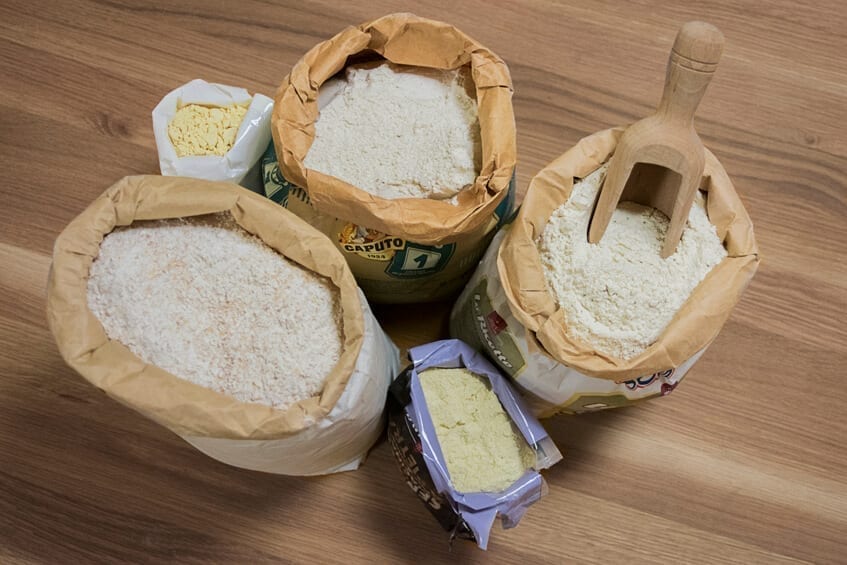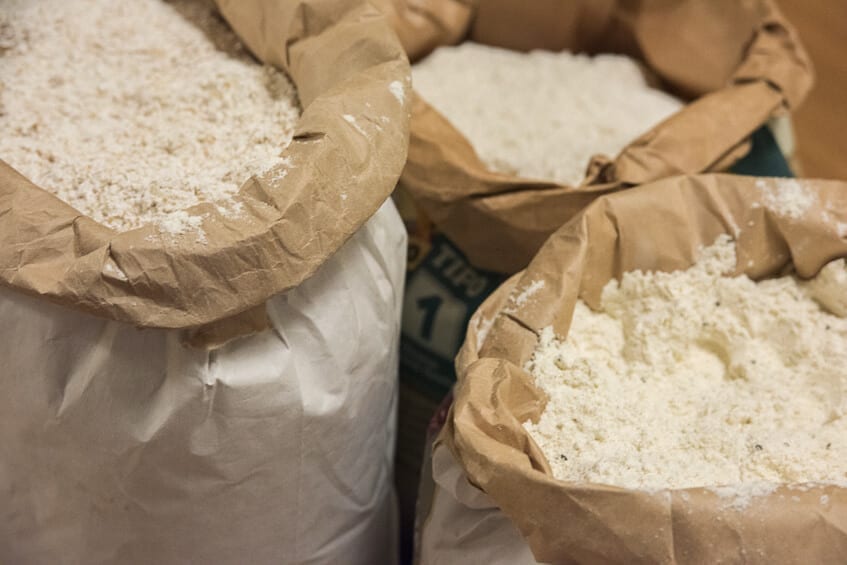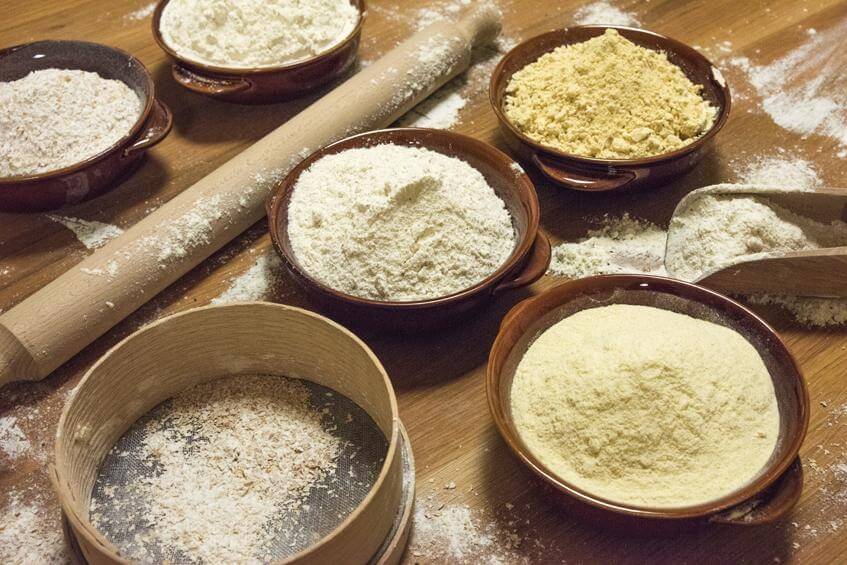According to the definition, the flour is the product of grain milling. In the most common sense of the term, flour is the powder made by grinding wheat grains while the product resulting from the grinding of durum wheat is called semolina. Apart from the type of wheat, semolina differs from flour for its granulometry (the grain size); the former is coarser than the latter.
Nowadays, there are many types of flour coming from cereals, legumes, dried fruits etc. We have spelt, barley, rye, flax, chickpea, chestnut, wholemeal, white flours, you name it.
This post wants to shed some light on wheat flours by analysing the different types.
First of all, let’s solve a fundamental dilemma: what is the difference between refined flour and wholemeal flour?



The Tipo 00 flour (soft flour) is the most refined and free of bran and wheat middlings (two by-products of milling). Wholemeal flour on the contrary has the highest percentage of bran and wheat middlings and therefore is the most complete nutrition-wise. Wholemeal flour, compared to refined one, contains more starch, fibres, proteins, vitamins, fatty acids and ashes (mineral salts). Besides, if it’s stone ground, the flour is even better. Stone-milling is a low intensity process that mills grain coldly so the flour is not heated up and keeps its organoleptic and nutraceutical properties.
But the transition from Tipo 00 flour to wholemeal flour is not immediate. Depending on the ash content, we have different intermediate stages corresponding to flours with different properties: Tipo 0 flour, Tipo 1 flour or Tipo 2 flour.
Tipo 0 flour is less refined than Tipo 00 flour but is largely devoid of nutritional principles.
Tipo 1 flour: it contains more bran and wheat germ which are the sources of several essential nutrients.
Tipo 2 flour or “semi-integrale” is characterized by a coarser granulometry and a greater presence of fibres and germs.
To make pizza at home we suggest that you don’t use Tipo 00 flour. Choose instead Tipo 0 flour for its minimum protein content.


